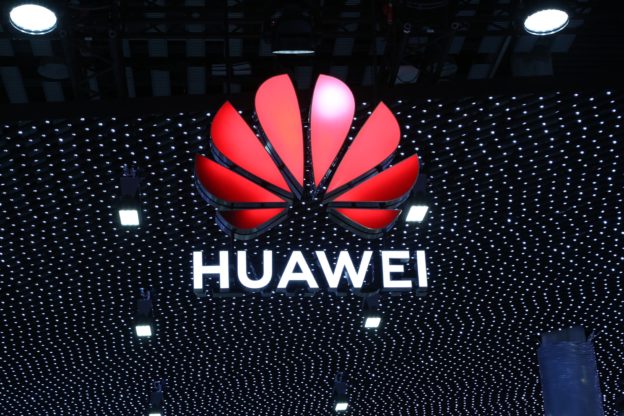
In the evening of May 15th, the Bureau of Industry and Security (BIS) under the US Department of Commerce announcedan item on Friday, local time.”plan to protect US national security “, which is “Restrict Huawei’s use of Americantechnology and software to design and manufacture semiconductors overseas Ability” to prevent Huawei fronbypassing US export controls.
This move is a huge hit for Huawei, Apple, chip foundry giant TSMC and Oualcomm. Among them, TSMC is the main manufacturer
of chips for Huawei’s HiSilicon division.
Global companies using US technology supply Huawei Require a license
2019,BIS adds Huawei and its 114 branches to the list of entities, prohibiting U.S.companies from providing parts and technology to Huawei. Entities on this list aresubject to certain scrutiny for the purchase of US. products.
However, BIS believes that in the past year, Huawei is still using US software and technology todesign semiconductors and using US equipment for production, which is essentially contrary to theentity The purpose of the list.
US Secretary of Commerce Wilbur Ross said:”We must modify the rules used by Huawei andHisilicon.”
specifically, the new revision The rules will include the following productsmanufactured abroad into export control requlations:
1,Semiconductor design products produced by Huawei and related companies on thephysical list (such as HiSilicon),As long as it is included in the US Business Control List (CCL)Direct products of software and technology are regulated.
2.Products such as chipsets, as long as they are designed by Huawei and relatedcompanies on the physical list (such as HiSilicon) and are produced by equipment thatis included in the US Commercial Control List (CCL), even if they are Production abroadis regulated.This restriction also emphasizes that whether it is shipped to Huawei or relatedcompanies on the entity list by re-export, foreign export, or only domestic transportation A licenseis required.
In addition, BIS emphasized that in order to cause a direct adverse economic impact on factoriesthat use U.S. semiconductor manufacturing equipment, these factories have been producingHuawei products that have been produced since the effective date of the rules, and are not subjectto new licenses. The constraints of the rules.This rule will allow wafers that have beenproduced to be delivered to Huawei within 120 days from Friday.These chipsets need Putinto production before Friday, otherwise they will be prohibited from exporting according to theatest regulations.
It can be said that this rule expands the scope of the entity list. Whether it is a US company or notas long as it uses US technology and equipment, it needs a license to ship to Huawei. span>
Will TSMC and SMIC break supply to Huawei?
Huawei is a Fabless manufacturer, even if the chip it designs does not use any American softwareand technology, it is still It needs to be produced by TSMC, SMIC and other chip foundries.If these chip foundries use American semiconductor equipment to produce Huawei chips, Then itwill also be restricted by the United States. In other words, if these chip foundries do not want tofind trouble, they cannot use American semiconductor equipment to produce chips for Huawei.
According to the statistics of VLSIResearch, global semiconductor equipment system andservicesales in 2018 were US$81.1 billion. Among the top five equipment manufacturers,the UnitedStates accounts for two, of which United StatesApplied Materials The company takes17.27% market share rankingFirst, Panlin Semiconductor13.4 marketsharerankingFourth. The two together accounted for 31.120% market share.
It can be seen that Both TSMC and SMIC have used a lot of equipment from these twoAmerican semiconductor equipment manufacturers. In addition, the second lithographygiant ASML, which produces light The core part of the engraving machine-the lightsource is also from the United States.
It can be said that Huawei chips cannot avoid American equipment at the manufacturing end. Thistime the United States really wants to completely cut off Huawei’s global chip supply chain.
A fab insider said, “Unless SMIC does not use American equipment for HuaweiThe production ofchips can avoid the new US requlations. Although there are already some domestic substitutions foretching machines, PVD, CVD, cleaning machines, oxidation/annealing equipment, etc., it isunrealistic to completely avoid American semiconductor equipment.
This also means SMIC If international companies continue to use US equipment forHuawei OEM chips, they may also be subject to US sanctions.
An industry analyst said that a possible way to avoid it is that Huawei directly chooses chips fromother domestic or non-US foreign manufacturers to replace self-developed chips. At least from theUnited States new From the perspective of the regulation, this seems to be feasible. And beforethis, in addition to using self-developed chips, Huawei did use a large number of domestic andJapanese and South Korean and other non-US chips to replace US chips. However, fromFundamentally speaking, the chips of other domestic or non-US manufacturers are still inseparablefrom EDA software and semiconductor equipment in the United States. Whether it is feasible tobypass the new U.S. regulations is still in the US Department of Commerce.
For Huawei, I am afraid this time is really about the moment of “life and death.” The promulgationof the new US regulations, we should clearly realize that “domestic substitution” is not just asentence The slogan of chicken blood should be the goal that Chinese semiconductor people strivefor.